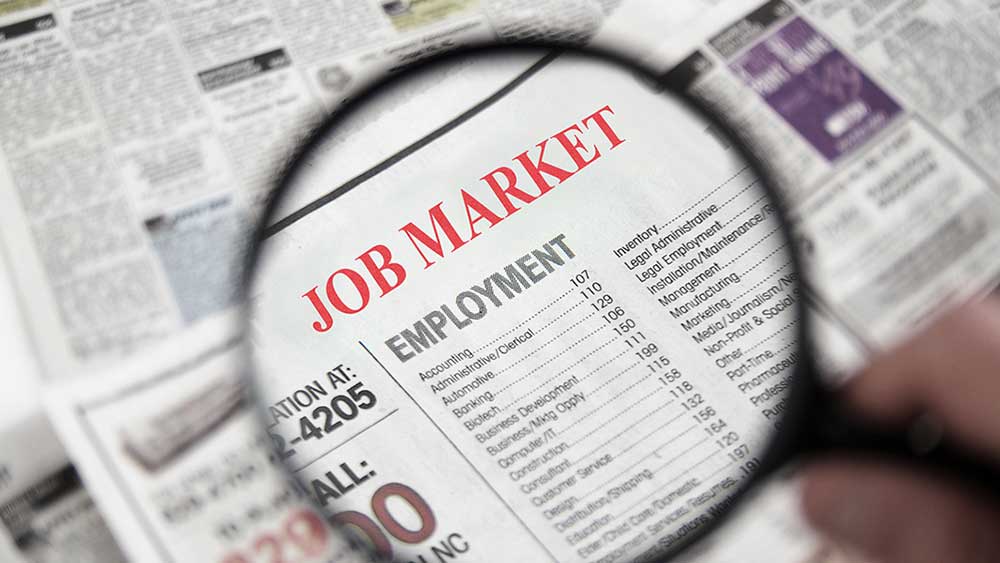[ad_1]
The U.S. economy added 528,000 jobs in July as the unemployment rate fell to 3.5%. The stronger-than-expected jobs report shows that the Federal Reserve still has more work to do to cool the labor market. After the data, the Dow Jones industrial average fell.
X
The average hourly wage rose 0.4% on the month vs. expectations of 0.3%. Annual wage growth of 5.2% topped forecasts of 5.0%.
Private-sector payrolls rose 471,000 in July, while government jobs rose by 57,000.
Wall Street had expected the July jobs report to show a gain of 250,000 jobs, including 220,000 in the private sector. The jobless rate was expected to hold at 3.6% for a fifth-straight month. Job gains for May and June were revised up by a combined 28,000. The initially reported gain of 372,000 jobs in June was revised to 398,000.
While wage gains are still historically strong, they’re not close to keeping up with inflation. The annual CPI inflation rate hit 9.1% in June.
The headline job and wage figures come from the Labor Department’s monthly survey of employers. A separate household survey, which is used to derive the unemployment rate, showed that the ranks of the employed rose a more moderate 179,000 in July.
Dow Jones, Treasury Yields React To Jobs Report
After the jobs report, the Dow Jones initially sold off, but ultimately closed up 0.2% in Friday’s stock market action. The S&P 500 rallied to close down just 0.2% while the Nasdaq lost 0.5%.
Through Thursday, the Dow has rallied 9.5% from its June 17 closing low, cutting its loss to 11.1% from its Jan. 4 closing peak. The S&P 500 has rallied 13.2% since mid-June, climbing to within 13.4% of its all-time closing high. The Nasdaq composite has advanced 19.5% from its bear-market low, but remains 20.8% below its record high.
Markets are now pricing in a 68.5% chance of another 75-basis-point move at the Federal Reserve’s Sept. 20-21 meeting. Ahead of the July jobs report, markets saw about 60% odds of a half-point rate hike and 40% odds of a 75 basis points.
However, the stock market has rallied as Wall Street bets that the U.S. economy will be weak enough for the Federal Reserve to shift from rate hiking to rate cutting by mid-2023.
The outlook for slow growth and possible recession had seen the 10-year Treasury yield pull back sharply from its mid-June high of 3.48%.
After the jobs report, the 10-year Treasury yield jumped 16 basis points to 2.84%.
Be sure to read IBD’s The Big Picture every day to stay in sync with the market direction and what it means for your trading decisions.
Jobs Report Details
The leisure and hospitality sector added 96,000 jobs. Factory employment grew by 30,000.
Construction jobs rose by 32,000. Health care and social assistance payrolls rose 97,000. Retailers added 22,000 jobs, while transportation and warehousing jobs rose 21,000.
Unemployment Rate
The household survey showed that the ranks of the employed rose 179,000. The number of people participating in the labor force, meaning they’re working or actively looking for a job, fell 63,000.
The share of the working age population (age 16 and up) participating in the labor force dipped to 62.1%.
According to the monthly survey of households, 5.67 million Americans are unemployed. That’s now fewer than the 5.8 million unemployed in February 2020, before the Covid lockdown.
Jobs Report Puzzle
It seems possible that the uniformly strong July jobs report is overstating the strength of the labor market. The jobs data is subject to revision, after more complete data is collected months later. While it’s unclear if major revisions will happen, here are some dissonant data points to keep in mind. Oddly, over the past four months, the household survey shows the number of people working has fallen by 168,000, even as the employer survey shows an increase of 1.68 million.
Initial jobless claims have climbed 57% from mid-March lows to 260,000 in the week through July 30.
An IBD analysis of daily Treasury statements indicates a sharp deceleration in the growth rate of federal income and employment taxes withheld from worker paychecks. In the 10 weeks through July 22, growth in those tax collections vs. a year ago slowed to 7.6% from a 12% pace through mid-May.
By comparison, the Labor Department’s index of economywide pay grew a stronger 9.7% from a year ago in June. That aggregate pay figure reflects hourly wage growth and the increase in total hours worked across the economy.
Please follow Jed Graham on Twitter @IBD_JGraham for coverage of economic policy and financial markets.
YOU MAY ALSO LIKE:
Market Rally Shows Mettle; 7 Stocks To Watch
Top Growth Stocks To Buy And Watch
Catch The Next Big Winning Stock With MarketSmith
Want To Get Quick Profits And Avoid Big Losses? Try SwingTrader
[ad_2]
Image and article originally from www.investors.com. Read the original article here.

